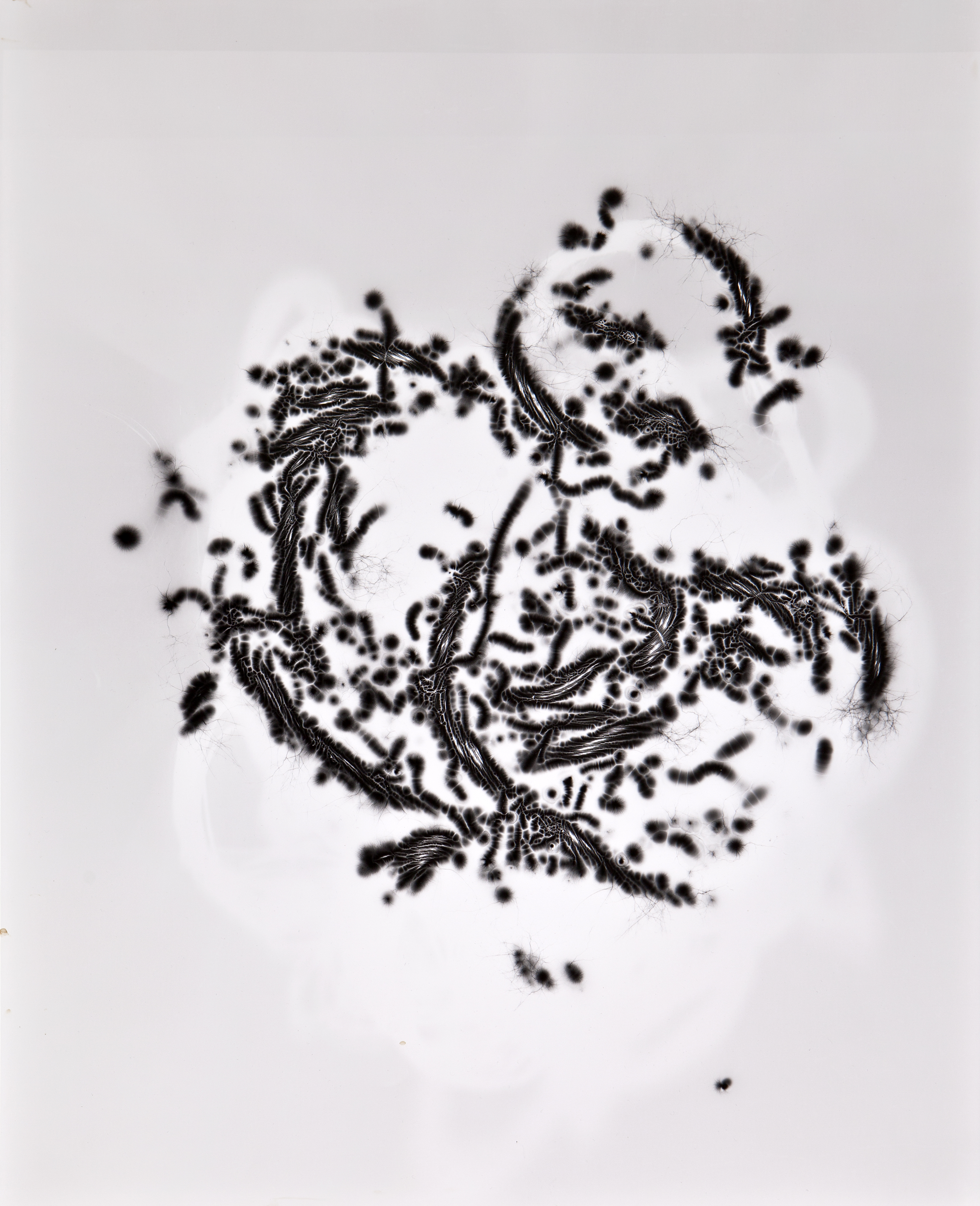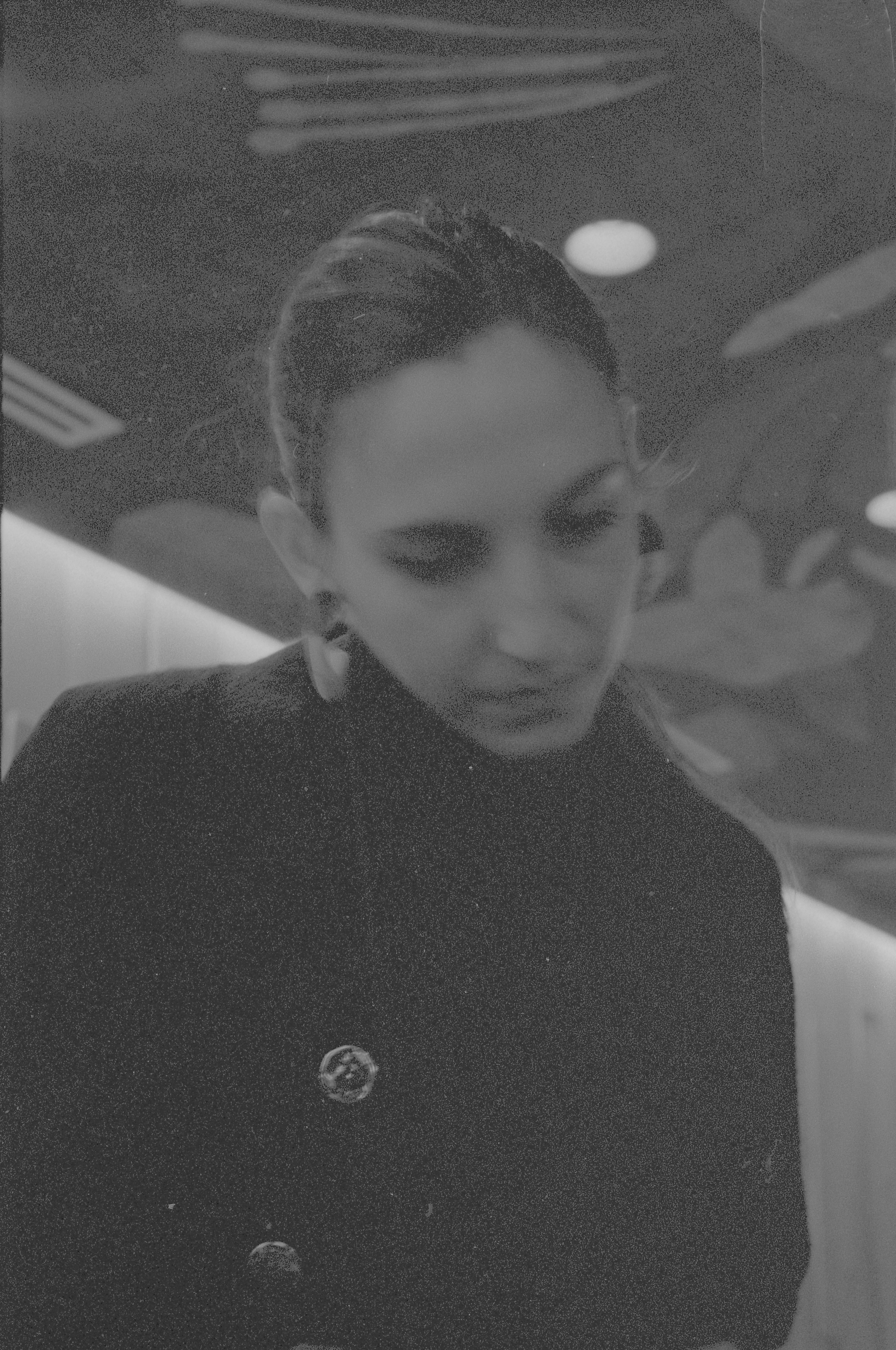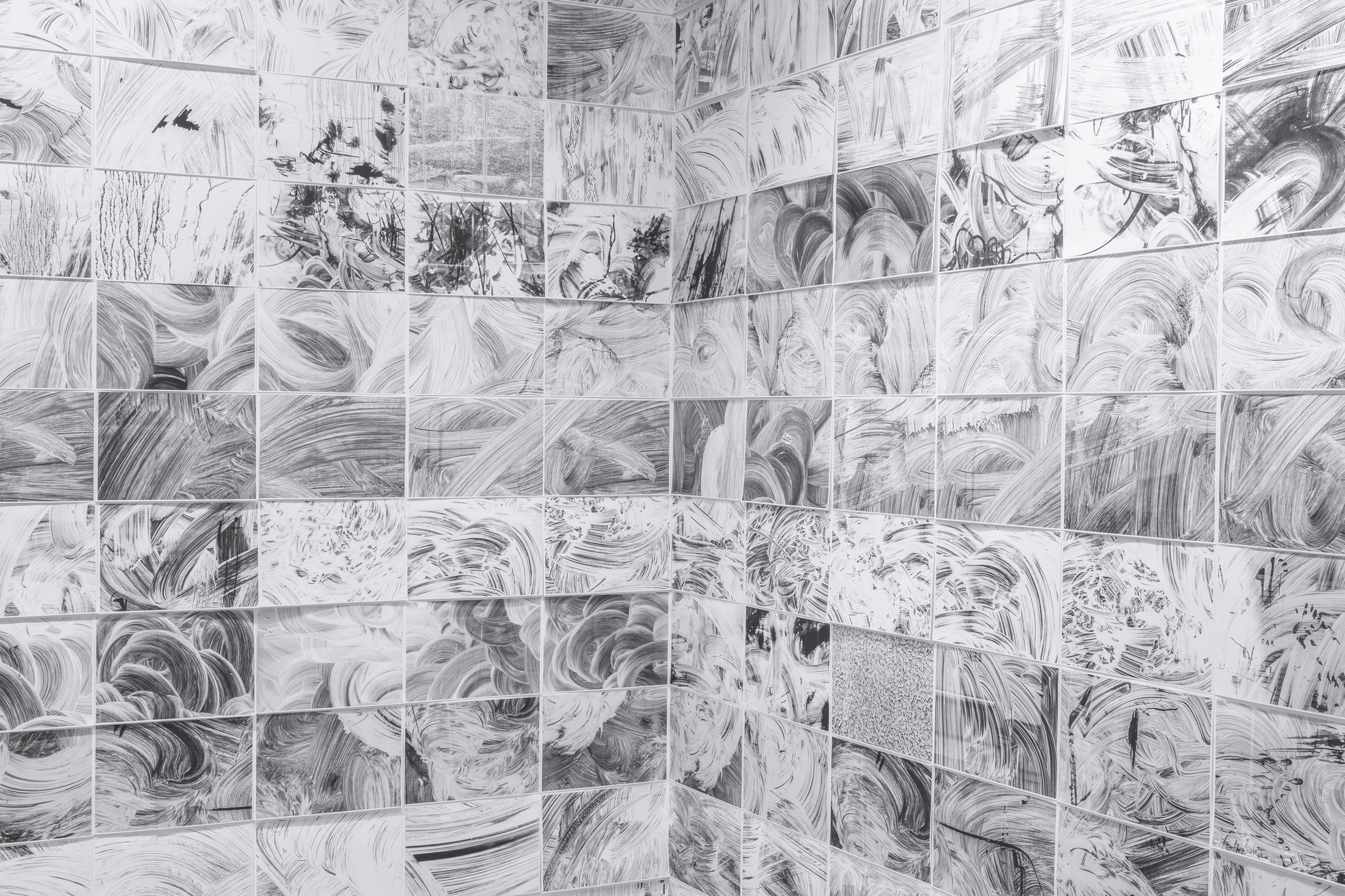Madrid-based curator Constanza Huerta de Soto smiles at me from the other side of the screen. We have met to talk about the last years of her career, which could be described as the dream of any young curator: she has directed two independent art spaces, managed a good number of exhibitions and collaborated with some institutions and galleries. She explains each project calmly, repeating several times that the most important thing for her is to get along with the artists: “I try to help them throughout the process, although sometimes I wish I could contribute even more!”
I first got to know her years ago, in 2018, during one of the workshops she organized at Vértice, a self-run art space that she founded just after finishing her degree in Fine Arts, inspired by the shared workshop dynamics at Berlin Art University (UdK). I remember her as an empathic and straight-forward curator who worked hand in hand with the artists. Five years later, she has co-founded picnic, an experimental exhibition space that opened its doors in September 2021, and that has held seven individual exhibitions featuring several national and international artists. In addition, she has curated “Feeling / Concealing”, a collective exhibition that took place at Zaragoza’s City Hall in 2022, and has participated in Arte Santander fair with a solo-project by artist Ana Fontecha. Since the last time I saw her, she has also married and become a mother, a situation she talks about, explaining how it has affected her professional decisions.
We chat for a long time about her interests, her projects and her dreams for the future. I end the interview eager to visit picnic soon, and to be able to continue the conversation in person. Here are her answers:

Hello, Coni! Let’s start from the beginning. As an artist, what led you to become interested in curation and create Vértice, your first independent art space, in 2017?
Hello Vic! I don't think I can consider myself an artist. I studied Fine Arts at the Complutense University, that’s true. Towards the middle of my degree I wanted to create a platform to gather and promote the work of some of my classmates (the name of this initiative / artist collective was Vértice). Later, I went to finish my studies at the Berlin University of the Arts (UdK). Here I had the opportunity to get in contact with a different teaching method, more coherent with the characteristics of the creative process. Instead of a set of subjects divided in different classrooms, we had workshops, spaces available 24 hours a day to produce, store, and exhibit our work. These workshops were associated with a tutor, who was an active professional artist.
The climate of these workshops was very enriching, since I had the opportunity to share lots of my time with other students with very similar concerns. In addition, the simple fact of being able to hang the works on the wall and the daily feedback I received from my classmates and my tutor, brought about great progress in a few months. It is a simple and practical model that is applied in almost all of Europe, but that today has not yet been implemented in Spanish fine arts faculties. At least not to my knowledge.
When I returned to Spain, faced with the prospect of finishing my degree and taking a different path from the members of Vértice, I decided to rent a space in Madrid and make it available to all those members of the group who needed somewhere to work. The concept was simple, we all paid the rent together, and we enjoyed a shared workshop to produce, talk and make exhibitions. We also received artists from outside and projects from curators outside the platform.

Can you tell us about these early years? What have you learnt from managing Vértice practically by yourself, with no bosses, having only your classmates involved?
It was a very enriching experience. Almost four years of running a workshop and exhibition space, with many people coming and leaving, budgets, needs, events... Mostly artists, although we also had some musicians who created a studio on the lower floor. After this experience it has always been quite easy for me to organize any kind of art project. I acquired a lot of knowledge, especially at the level of people management and conflict resolution. The initiative ceased when several members of the platform had to stop renting their space to study abroad. It also coincided with my stay in Pamplona.

Do you think it has been important to complete your training in Fine Arts with a more specific Master's degree in Curation at the University of Navarra? What did you gain from this experience?
In 2019 I was part of the first batch of the UNAV Master's in Curatorial Studies, one of the pioneers in Spain. The program had very powerful internationally active curators such as Vicente Todolí, Gerardo Mosquera, Nuria Enguita, Gabriel Pérez-Barreiro, Tania Pardo and Sergio Rubira. I learnt a lot. The only thing I missed was having more time to continue managing my project. They were not very flexible with the schedules, and all this made us focus more on study than work, and I guess all of this affected the continuity of my project in Madrid.
As a working mother, what are your thoughts in regard to labor in Spain, and, more specifically, within the art world? What solutions have you found to find a balance between work and motherhood?
After the master's degree I started working in an art consultancy for collectors and investors. It also functioned as a contemporary art gallery. I stayed here until the beginning of the pandemic, which was quite a gamechanger for all of us. Everything came to a complete standstill.
Adding to this on September 2020 I got married and my vision and my expectations over work changed quite a deal (especially after getting pregnant a few months later). The art market in Spain is quite limited and most projects are composed by the gallery director (who decides everything) and one or two other people who assist him. For this reason, the possibility of growth is very limited, at least on the private sector.
And the schedules may not be compatible with the type of upbringing that I wish to give to my daughters. When the moment came to make the decision, I did not think I could find the best conditions in the art sector. For this reason, I have decided to become an independent curator, something that is easy to reconcile with a part-time job, that allows me to be quite present in these first years of my daughters' lives.

How and why did the idea for Picnic come about, and in what way does it differ from the first project you run? Do you notice an evolution in your way of working since the Vértice period?
While working as an art consultant, I met Antonio Lozano, curator of Luminaria, a contemporary art event in the Usera neighborhood in Madrid which coordinated more than 400 artists throughout its different editions. He has also contributed to the creation of quite interesting artists collectives such as Hambre or Finger. We talked very often about setting up something together. In 2021 we were presented with the opportunity to rent a small space in the Delicias neighborhood in Madrid, a few meters from the Naves del Matadero Art Center. In September 2021 we decided to go for it and that’s how picnic was born, an experimental exhibition room where we invite artists to carry out intervention pieces.
One of my friends pointed out that he had all of which always has a part of work for sale since our aim is to help support artists’ work and to independently cover the costs of the space. Picnic is a very small room and lacks habitability (almost more like a storage closet). Far from acting as a negative limitation, these conditions have brought about very interesting solutions. Our method of works starts by choosing the artist (either because we feel an affinity with his work or because we believe he can make good use of the space) and then they must adapt to a room with very specific characteristics. Often the guests create unreleased works, which always surprise the viewer. One never knows what he is going to encounter when we open the door.
We try to offer artists a very personalized treatment, accompanying them throughout the creative process and offering them all the technical solutions they may need. It is very stimulating to participate in this process since we have the opportunity to delve into their work and often offer a personal reading about it. I think that what has changed the most with respect to the “Vértice period” is this personal treatment, although it also has to do with the fact that in this room we only do individual exhibitions in a solo project format.
You have organized a total of seven exhibitions in Picnic, with the idea that the artists intervene directly in the space, each one in his or her own way. What is it about direct intervention that attracts you? Does your way of working with each of these artists vary a lot?
The need to intervene rises from the characteristics of the space. Picnic does not function like a regular gallery, where you can arrive and just hand a sculpture or a painting... The size of the space and its particularities require having to reconsider the place, either to create an atmosphere for the artwork or to turn the space itself into an artwork. We try to treat all the artists in the same way, to give them a lot of freedom (you have invited them to), although obviously each creator is different and each formalization process poses new challenges.
Since its opening in September 2021 we have organized seven exhibitions: Víctor Solanas-Díaz (October-November 2021), Marlon de Azambuja (December 2021- January 2022), Ana de Fontecha (February-March 2022), Esther Mañas and Arash Moori (April -May 2022), Sergio D. Loeda (June-July 2022), Ángela Jiménez-Durán (September - November 2022) and Ander Sagastiberri (January – March 2023) and Felipe Talo (April – May 2023). Additionally, in July 2022 we took Ana de Fontecha's intervention project to the most important contemporary art fair in Cantabria, Arte Santander.

What did it entail to adapt the piece that artist Ana de Fontecha had created for your space to a commercial context, in this case the Arte Santander fair? Do you plan to continue working in this line?
Ana's work explores the relationship established between architecture, design and language. In our case, she was interested in the history of the space and the neighborhood. She did not want to arrive and just do her own thing without getting to know the place, from a material and human perspective. We dug up quite a few stories, some dramatic, about the people who had rented the room before us. In addition, Ana asked us for many details about the material conditions. We explained our problem of wall dampness, which, together with the constant interventions and restorations that we carry out throughout the year, forces us to constantly "redo" the walls, breaking and returning them to their original state.
Ana was very interested in the latter, and decided to use these physical conditions of the space in a metaphorical way. Just as the past somehow “invades” places, she wanted to talk about the way in which the wall also “overflows”, invading the space it contains. The pieces that she produced were molds of architectural elements of the room, presented simultaneously as the structure (what acts as support) and its overflow. Like a sort of representation of the process of architectural collapse.
This was the project that we presented at the Santander Art Fair. To adapt it, Ana made a series of sculptures using the same technique, a very fast process in plaster molded at the last moment of setting of the material. The result is very organic, very attractive shapes. Bringing these beautiful pieces to the fair was very interesting, especially the fact of coming up with a device that would allow us to display them in the fair booth.
Ana found some modular industrial aluminum and plywood shelves that had a striking contrast with the more organic shapes of the sculptures. The days spent at the fair and the good reception of our project by part all the other galleries, artists and curators was very gratifying.

Let’s speak about “Feeling / Concealing”. Were the pieces site specific here too? How does this experience compare to your usual work at Picnic?
Feeling/Concealing dealt with themes such as the dialectic often established between nature and culture, the attempt to return to a more direct experience of reality and the very cultural nature of art. Each piece spoke from a metaphorical perspective (or place) generating a series of reflections around these issues. We gathered six installations and a video projection. Three of these installations were produced specifically for the exhibition hall. This means we literally had to bring the (construction) materials and assemble them in the room. So yes, there was an important site specific component to the whole thing. The artists involved in this exhibition where Esther Gatón, Antonio Fernández-Alvira, Jorge Isla, Ángela Jiménez-Durán, Marlon de Azambuja and Jon Cazenave.
Working with an institution is very comfortable because you can concentrate exclusively on your work as a curator. You don't have to think about every other aspect (transport, insurance, technical solutions, press, social media...) And you don't have to assume any expenses either! They normally take care of everything. And ideally, they also pay. This is something that we should always demand for ourselves and for the artists, to promote good practices within the art sector.
Working with many artists was very stimulating, as always. It is a great pleasure to be able to build an experience from works that you are passionate about, letting them dialogue with each other in a physical space. But the most enriching thing is talking with the artists, especially when you have to assemble their work from scratch in a new room, adapting the original concept to a new location.
The buildings made available to us by the Zaragoza City Council were old Renaissance palaces that have been converted into exhibition halls. In our case, “Palacio de los Morlanes” had some rooms that connected with ancient buildings from the Roman era… For me it was a pleasure and a privilege to work in this environment, with these conditions. I really like to combine the picnic project with other commissions for institutions and/ or galleries.
If you were to resume production, would you like to somehow combine your artistic work with that of management?
That is my dream. Many people believe that if you want to seriously carry out an artistic production you should concentrate exclusively on that, and perhaps they are right. But there are also many examples of artist-curators and curator-artists. People who have their own work, and also contribute to organize exhibitions and/or managing exhibition spaces... It helps me to think of people like Valeria Maculán, Carlos Fernández-Pello, Ángela Cuadra... to give some examples.
For me it would be a dream to reach such a balance, because I find it hard to think of giving up either of the two. At the moment, I have prioritized management, but I would love to combine both. Hopefully I can do it soon! First, I think I have to settle down a bit, especially if I want to focus on my motherhood. But everything comes about eventually.

Last, but not least… Down what paths do you think your career will continue to develop? Do you have a crazy project or dream in mind, either as a curator or as an artist?
Apart from resuming my art production (perhaps even as a prerequisite), I would like to study more and deepen my concept of art. Something like developing my own theory, which could allow me to ground my intuitions and preferences at a theoretical level. I think there has to be a way to theoretically justify what is good for me, taking into account philosophy, history and other disciplines.
Apart from this, I also want to study very specific topics that seem to have lost steam in modernity, but are now recovering. An example is the symbolic vision of the world, or the way artistic images were always linked to very specific cultural uses and customs.
I am interested in delving into these issues and putting them into practice, perhaps even articulating a personal image-based worldview… This is the craziest thing I can tell you! I don't know if I'll succeed, but curating and creating seem to me to be two ideal tools to try... We'll see! Thank you very much for the interview Vic, and greetings to all your readers who I invite to contact me with any questions or concerns.
Words by Whataboutvic









